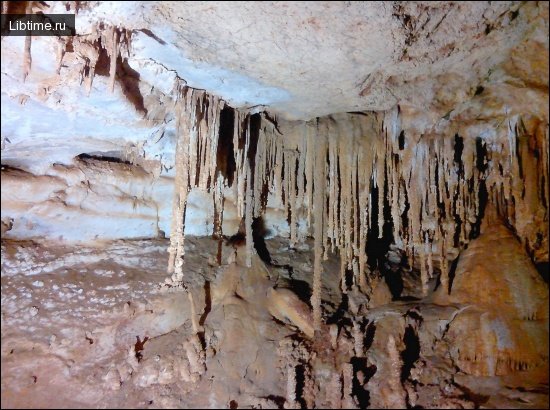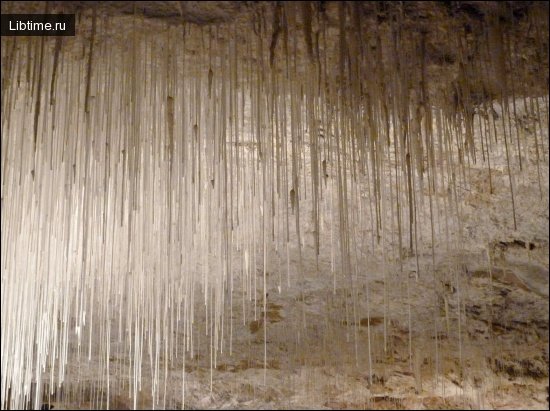Skelka Cave
Skelskaya cave is located on the western edge of the Ai-Petri mountain massif, on the slope of a small meridional spur of Mount Karadag (Ukraine).
The cave is confined to a tectonic fault of north-western direction. In the upper part of the cave there is the main grotto, the floor of which is cluttered with limestone blocks covered with powerful calcite concretions.
A huge column, 8 m in diameter and 12 m high, dividing the grotto into two parts, stands out among the concretions. In the northeast, the main grotto passes into a huge well made of collapsed limestone blocks.
In the lower, watered part of the cave, located 45 m below the entrance, there are several smaller grottoes connected with each other and with the upper galleries of the cave by a system of narrow horizontal and steeply sloping passages and wells. The total length of the cave is 570 meters. A typical troglobiont, the bokoplava, was found in Skelskaya Cave. 
Its near part looks like a sloping gallery, which in Titon reef limestone passes into a cascade of wells and shafts from 10 to 85 m deep, alternating with narrow horizontal passages and grottoes. The height of some grottoes reaches 23 meters. From a depth of 435 m, a stream constantly flows along the bottom of the cave.
There are lakes. Nate formations are widespread. The total length of the cave is 1700 meters, and the depth is 470 meters. 
It was formed in massive Upper Jurassic limestone along a tectonic fault. The mine is of erosion-corrosion origin and is a system of vertical cavities separated by small pads. The total depth of the mine is 261 m (Fig. 10).
Carrs are developed on the walls. In the lower part there are small deposits. The air temperature is 8°. Also interesting is the Cascadnaya mine, located at the bottom of a huge sinkhole in the central part of the Ai-Petri massif.
It was formed in the Upper Jurassic limestones. The mine consists of a system of cascades, from 17 to 53 m deep, between which there are inclined galleries with smaller (2-3 m) ledges.
The total depth of the mine is 246 m. Its walls are corroded up to the depth of 100 m, and below they are covered with thin calcitic concretionary crust. At depths of 213 and 233 m from the surface there are small lakes. During floods the lower part of the cave is filled with infiltration water to a height of 8-13 meters.
The air temperature in the mine deeper than 60 m is 5°,1. Cascadnaya is a relict formation, already abandoned by water.
It owes its origin mainly to the erosion-corrosion impact of ancient water flows of modern flows in the formation of the mine is relatively small.


